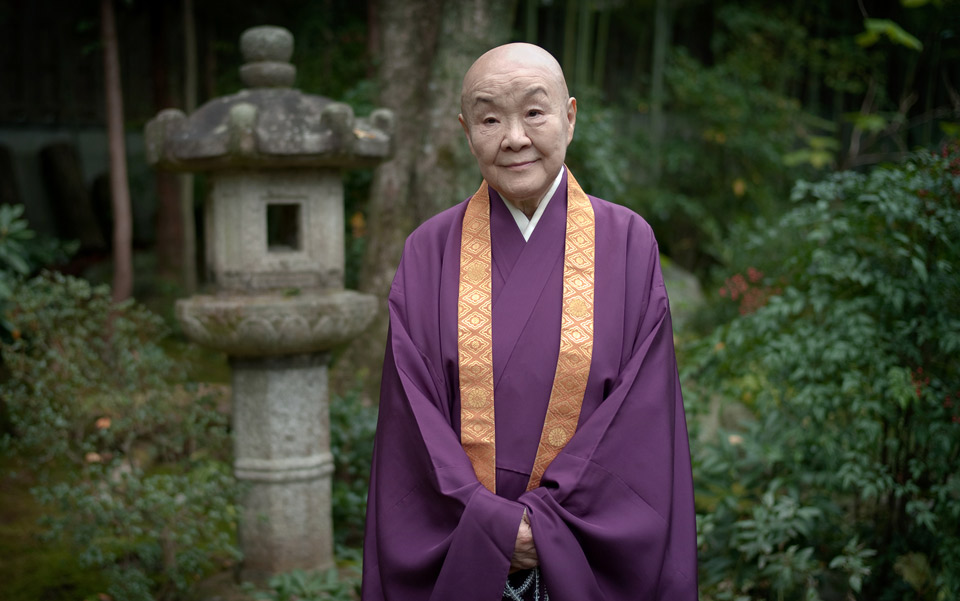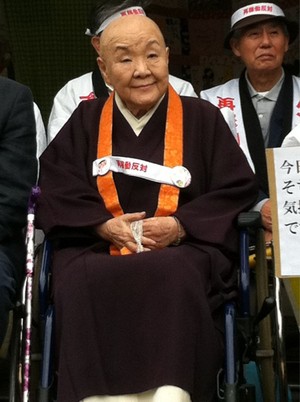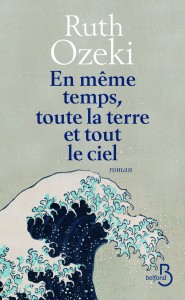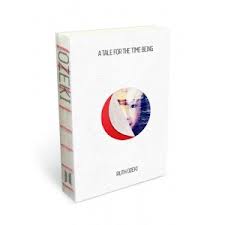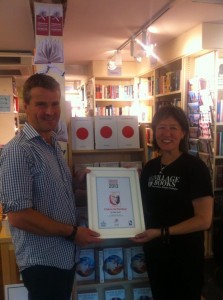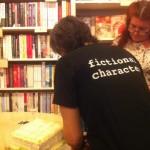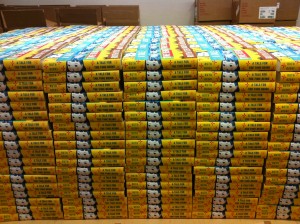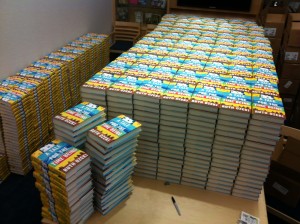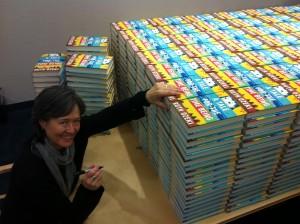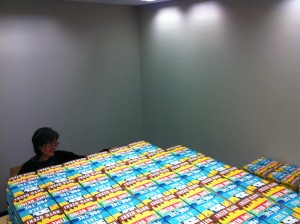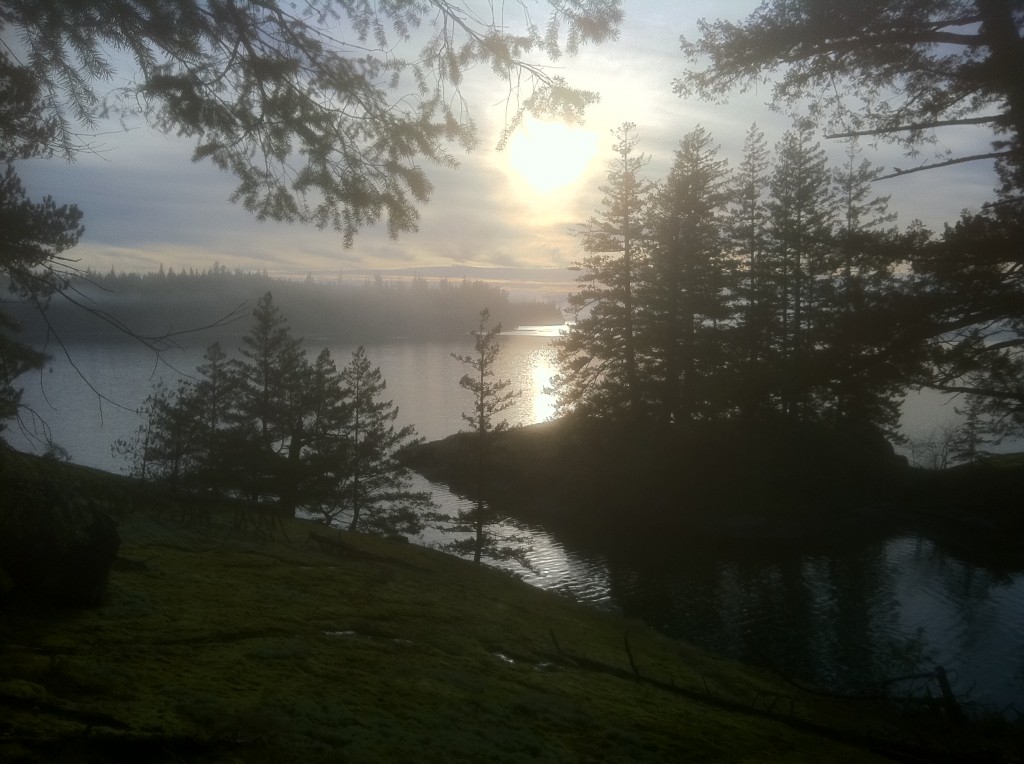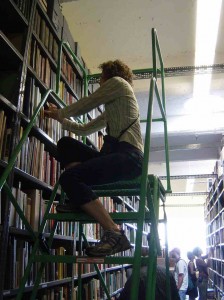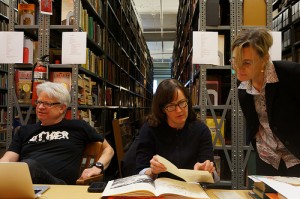My friend Sarah Sentilles tagged me to participate in The Next Big Thing: Authors Tagging Authors, a blog chain, a meme, a community, an ever-emergent and aggregating non-event that’s wending it’s way around the Internet. It’s authors tagging authors to answer ten questions about the book they’re working on. And it’s a nice way to acknowledge and bootstrap your writer friends.
Sarah Sentilles is a wonderful writer, feminist theologian, and the author of Breaking Up With God, a magnificent, funny, intelligent and heartfelt book about God, institutional religion and personal faith. Thank you, Sarah, for tagging me!
Okay, on the the ten questions:
1. What is your working title of your book (or story)?
A Tale for the Time Being is the final title, but it took me a long time to find it. I wish I could say that I came up with it myself, but I can’t. My husband thought of it. I had several not-so-good titles—actually, they were pretty awful—and I was racking my brains, combing through dictionaries, the thesaurus and Bartlett’s for inspiration, scribbling long lists of words and evocative phrases, following Oliver around the house and reading my lists out loud, while he listened, politely, wincing as the ideas got worse and worse. Occasionally he would venture to make a suggestion, which I would quickly dismiss. Weeks passed. Then finally, one night, when he was taking a bath, he called out, “I’ve got your title.”
Something in the way he said this made me pay attention. I went to the door and opened it. He was lying in the tub, reading the latest issue of New Scientist magazine. “What is it?” I asked.
“A Tale for the Time Being,” he said. “That’s your title,” and then he went back to reading his magazine. He was right. I couldn’t believe it. I repeated it a couple of times, then went upstairs to email my editor, who agreed. Everyone agreed. It was the title.
Later, when I asked him how he’d come up with it, he shrugged and said it was self-defense.
2. What is the one-sentence synopsis of your book?
A semi-fictional novelist named Ruth, living on a remote island in Desolation Sound, discovers a Hello Kitty lunchbox containing the diary of a troubled Japanese teenager washed up on the beach, and assuming it’s debris from the 2011 Japanese tsunami, sets out to discover all she can about the fate of the mysterious schoolgirl named Nao.
Ugh, not a very elegant sentence, I’m afraid.
3. Where did the idea come from for the book?
Many places, but Zen Master Dōgen is a good place to start. Dōgen was a 13th century Zen teacher who wrote several essays on the subject of time, and I happened to be studying these when Oliver sent me the link to an article about Japanese maid cafés. (He’s always sending me useful links, including one to a New Yorker article on quantum computing, which ended up in the book.) Soon I was immersed in the world of Japanese cosplay, manga, animé and pop culture, and from there, I became interested in the problem of bullying and teen suicide in Japan. At the same time, I was reading about kamikaze fighters during World War II, thinking about 9/11, watching the war on Iraq unfold, and living my life on a remote island with my husband and my cat. And cooking soup. And then the Tohoku earthquake and tsunami hit and the nuclear reactors at Fukushima melted down. Somehow all these factors, and more, came together and the novel was born. Inspiration is a convergence of random factors, which if you are lucky, you A) notice, and B) appreciate, and C) incorporate and turn into something new.
4. How long did it take you to write the first draft of your manuscript?
Books are time beings, too. I started writing the first draft in 2006 and worked on it for two years. In 2008, I decided it was hopeless and I abandoned it. In 2010, on a whim, I started working on it again and finished a draft in early 2011. So that makes three years, so far. Then I was in the process of submitting the manuscript when the March 11 earthquake and tsunami hit Japan. Overnight Japan was a different place, and the world was different, too, and the novel I’d written was no longer relevant, and so I withdrew it. I spent several months thinking about what to do, and then in May I threw half of the manuscript away and started to write again, and a year later, I finished. So excluding the two years when it sat untouched on my computer hard drive, and including the editing time, I’d say it took about five years, but I don’t think it’s really accurate either, because some of the material I can trace back to 1999, and even earlier.
5. Who or what inspired you to write this book?
I think I answered the what part of this question, above, so I will focus on the who. My novelist friends inspire me to write so I can continue to hang out with them and talk shop. And in particular, Karen Joy Fowler inspired me to finish this book. She read the first fifty pages of the rewrite and called them “audacious,” which was the best affirmation I could have hoped for.
Of course writers I don’t know, but whom I admire, inspire me to write books, too: Jane Austin, Margaret Atwood, Milan Kundera, Jorge Luis Borges, Kurt Vonnegut, Haruki Murakami, Setouchi Jakucho, David Mitchell...the list goes on and on.
My husband, Oliver, inspires me to write books. He has a very interesting mind and sees the world in ways that astonish me.
Readers inspire me to write. Without readers, books don't exist.
6. What genre does your book fall under?
Literary fiction? Mainstream fiction? Speculative fiction? Philosophy?
7. What other books would you compare this story to within your genre?
Oh, boy. It’s not a genre book, so I don’t know. People tell me that there are some parallels between A Tale for the Time Being and Murakami’s newest novel 1Q84, but I haven’t read it yet, so I don’t know. I’m waiting to read it until mine is published.
8. Will your book be self-published or represented by an agency?
It’s represented by an agency and will be published by Viking Penguin in the US and Canongate in the UK. It’ll be coming out on March 12, 2013, which also happens to be my birthday.
9. Which actors would you choose to play your characters in a movie rendition?
I have absolutely no idea.
10. What else about your book might pique the reader's interest?
It’s funny! I mean, it’s also serious and has a lot of serious and tragical things in it, including bullying, suicide, war, philosophy, and quantum mechanics, to name just a few, but it’s also funny. So don’t get scared off by all the heavy stuff. If you cry, I promise you will laugh a lot, too.
Okay, now, here is when I get to tag some of my wonderful writer friends.
- Karen Joy Fowler, author of The Jane Austen Book Club, who has written one of the most amazing books I’ve ever read, We are all completely beside ourselves, which will be published in May of this year. Karen will post her answer here.
- Rahna Reiko Rizzuto, author of Hiroshima in the Morning and Why She Left Us, who is working on a wondrous new novel, which I’ve had the privilege of reading in an early draft! She will post her answers here.
- Laurie Frankel, who I hope will write about her new book, Goodbye For Now, a remarkable love story about a software engineer who invents a way for people to email their dead loved ones. which will be coming out in paperback soon. She will post her answers here.



